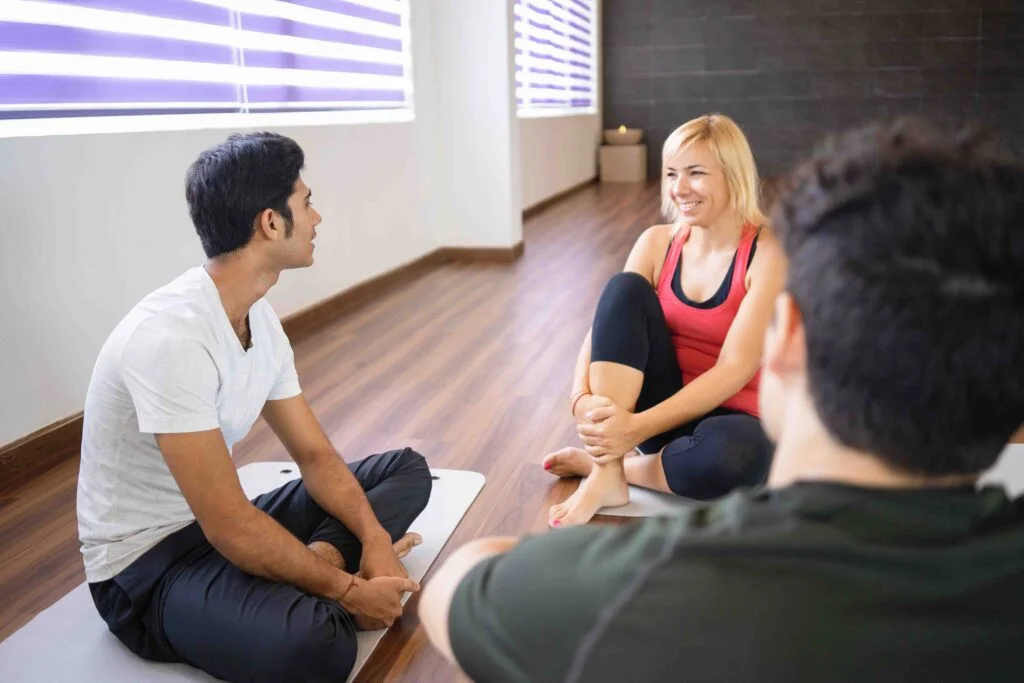Table of Contents
ToggleHow to Handle Questions Asked by Yoga Students
As a yoga teacher, it’s natural to encounter questions you may not have an immediate answer to. Yoga is a vast discipline with layers of physical, philosophical, and spiritual knowledge. Handling student questions thoughtfully is key to building trust and creating a positive learning environment.
How to Handle Situations When You Don’t Know the Answer
1. Acknowledge Honestly
Being honest about what you don’t know shows integrity and humility. It’s okay not to have all the answers.
2. Offer to Research the Answer
Let the student know you’ll do some research or consult another teacher. You might say:
3. Suggest Alternatives
If the question is unclear or hard to address directly, suggest a related concept or practice that may offer insight.
4. Normalize Not Knowing Everything
Remind your students that yoga is a journey of lifelong learning—for both teacher and student.
5. Point to Other Resources
Recommend books, podcasts, websites, or even another teacher who may offer more expertise in that area.
6. Consult Colleagues or Mentors
Privately consult with a fellow teacher or mentor and bring the answer to your next class.
7. Turn it Into a Learning Moment
Treat student questions as opportunities to deepen your own knowledge and enrich future classes.
8. Encourage Student Research
Empower your student to explore the topic on their own and share what they discover with the group.
9. Refer to Specialists When Needed
If a question relates to medical, psychological, or highly technical issues (e.g., injuries, trauma), refer them to a specialist.
10. Follow Up
Check in with the student later to ensure their question was resolved or to share what you found.
Why a Teacher May Not Have an Answer
Understanding these reasons can help you respond with compassion and confidence:
- Limited exposure to the specific subject
- Complexity of philosophical or anatomical concepts
- Time constraints during class
- Language or communication gaps
- Unclear questions from students
- Topics outside your area of expertise
- Difficulty simplifying abstract concepts
How to Continuously Grow as a Yoga Teacher
To confidently answer more questions over time, prioritize your own growth:
Attend Trainings & Workshops
Learn from senior teachers through continuing education and specialty workshops (e.g., yoga therapy, anatomy, trauma-sensitive yoga).
Read Widely
Study yoga texts (like the Yoga Sutras, Bhagavad Gita, or Hatha Yoga Pradipika), as well as modern resources on anatomy, teaching methodology, and philosophy.
Maintain a Strong Personal Practice
Experience deepens knowledge. The more you practice, the more you understand what you teach.
Observe & Assist Experienced Teachers
Gain insight by assisting or simply observing seasoned teachers’ classes.
Seek Feedback
Ask students or fellow teachers for constructive feedback on your teaching style and knowledge gaps.
Join a Yoga Community
Surround yourself with like-minded teachers. Exchange ideas, challenges, and new insights.
Engage in Svadhyaya (Self-Study)
Make daily time for reflection, meditation, journaling, or studying yogic texts.
Frequently Asked Questions (FAQs)
Q: How do I handle a large class with mixed levels?
Offer layered instructions. Begin with the foundational pose and offer modifications for beginners and deeper variations for advanced students.
Q: What should I do if a student is struggling with a pose?
Encourage use of props, offer modifications, and reassure them that progress is personal and non-linear.
Q: How do I keep a positive and inclusive class atmosphere?
Greet students warmly, use encouraging language, celebrate progress, and create a safe, non-judgmental space.
Q: What are the qualifications needed to teach yoga?
Most yoga schools require completion of a 200-hour Yoga Teacher Training (YTT). Further credentials (e.g., 300-hour YTT, Yoga Therapy training) enhance specialization.
Q: How can I gain experience after teacher training?
Start by teaching friends or small community classes. Volunteer at studios, record online classes, or assist senior teachers.
Q: How do I develop my own teaching style?
With experience. Blend what you’ve learned with your personality. Stay authentic and always keep evolving.
Final Thought
A yoga teacher doesn’t have to be a walking encyclopedia. What’s more important is your willingness to learn, humility to admit limits, and commitment to your students’ growth. Every question—whether answered or not—is an invitation to explore deeper into the rich, lifelong path of yoga.





